Table of contents
Who are the Hindu gods?
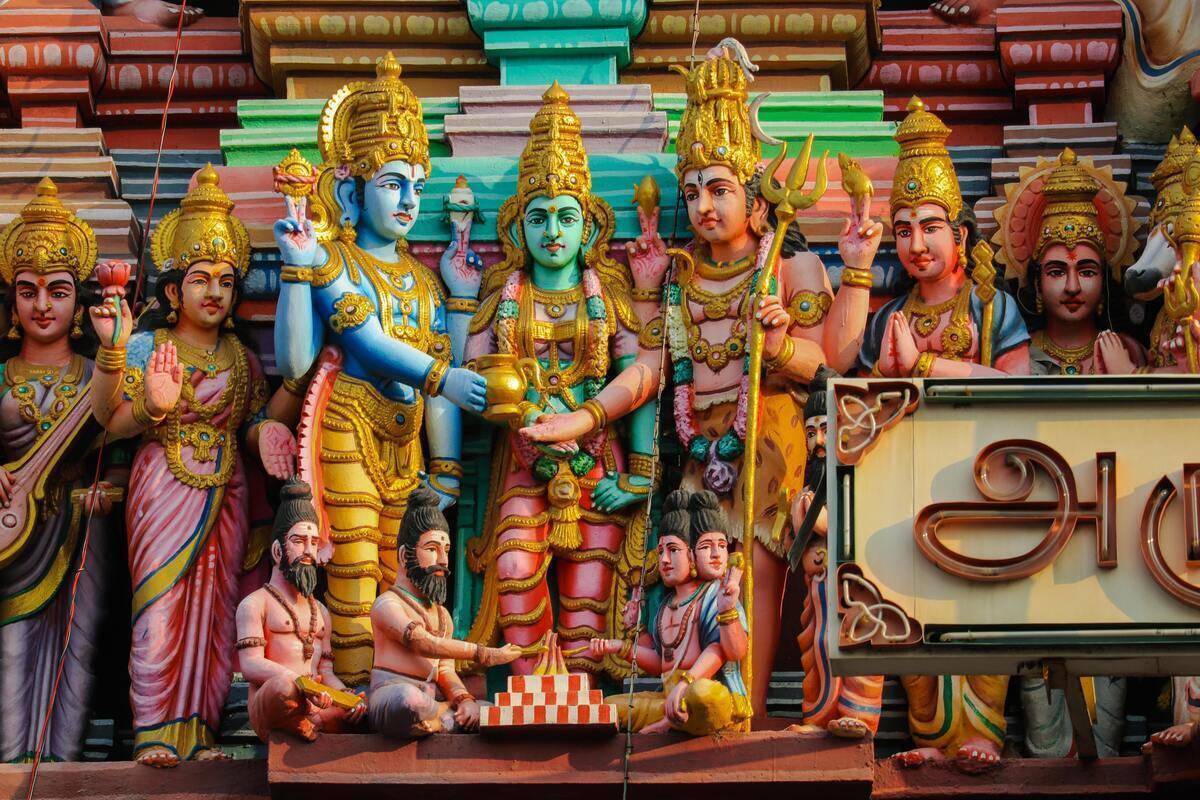
Hindu gods are all the deities that belong to the religion called Hinduism. The history of Hindu gods and the religion in its entirety, is considered one of the oldest of mankind. Currently, Hinduism is the third largest religion in the world, predominant in India, Nepal and some Southeast Asian countries.
Because it is a very complex polytheistic religion with diverse traditions, the simplest way to understand the mystique surrounding Hindu gods is through its main divisions. In this article, you will learn about the main branches of Hindu gods, as well as the deities belonging to each of them.
Trimurti, the three main Hindu gods
The concept of Trimurti is associated with the idea of trinity. According to Hinduism, there are three Hindu gods responsible for the balance and functioning of the entire universe: Brahma, Vishnu and Shiva. These deities represent the forces and energies contained in every being and every person in this world, ensuring their transformation. Learn more about each of them below.
Brahma, the God of creation
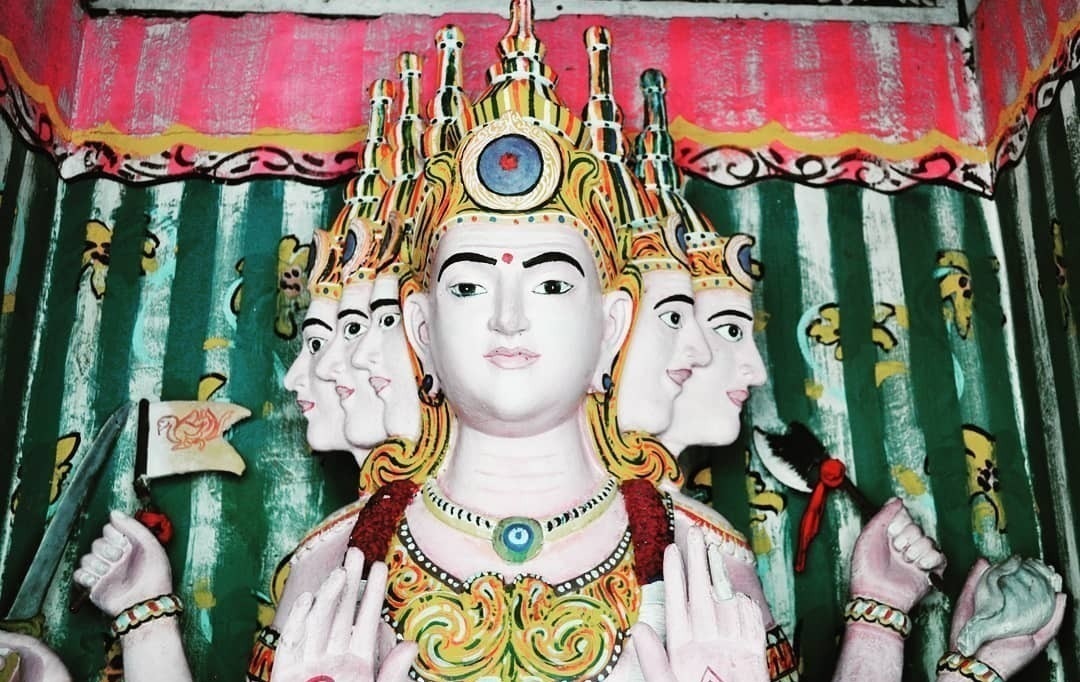
The god Brahma is one of the main Hindu gods, represented as the creator god. He is usually represented by a human figure with four heads, four arms and by his reddish skin tone.
The relationship between Brahma and the phenomenon of creation has two interpretations. The first one goes back to the narrative that this god was "self-generated" from a golden egg created by himself. In other versions, the god Brahma is attributed with the creation and knowledge of the Vedas (the oldest religious texts of India).
Although it is part of the supreme trinity of Hindu gods, it is not common in Hinduism to worship this deity, nor to build temples to it.
Vishnu, the God of preservation
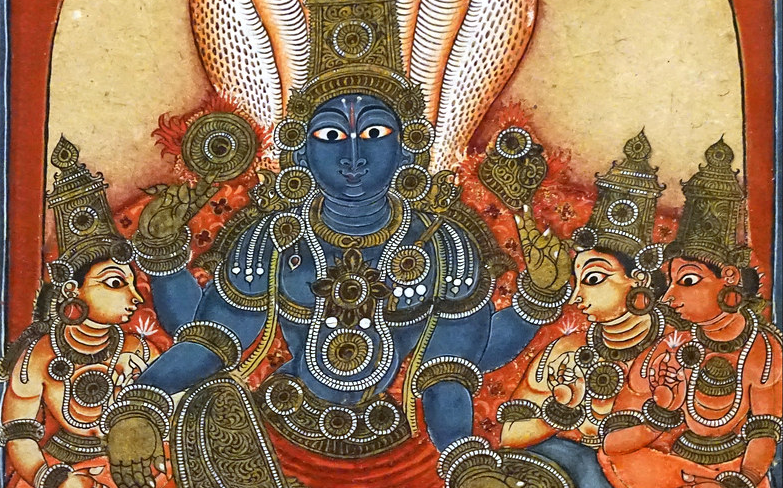
Vishnu is recognized as the preserver god in Trimurti. He has bluish skin, four arms and is commonly depicted resting on a snake.
In Hinduism, the narrative about the story of the god Vishnu focuses on his avatars (or incarnations). It is believed that whenever the world is threatened by the forces of chaos and destruction, this god will return to earth prepared to restore order and to protect the Dharma (the behaviors that make life and order possible in the world).
As the one capable of upholding justice and balance in the world, the sacred writings predict ten incarnations of Vishnu in history, each in a different form.
Shiva, the god of destruction
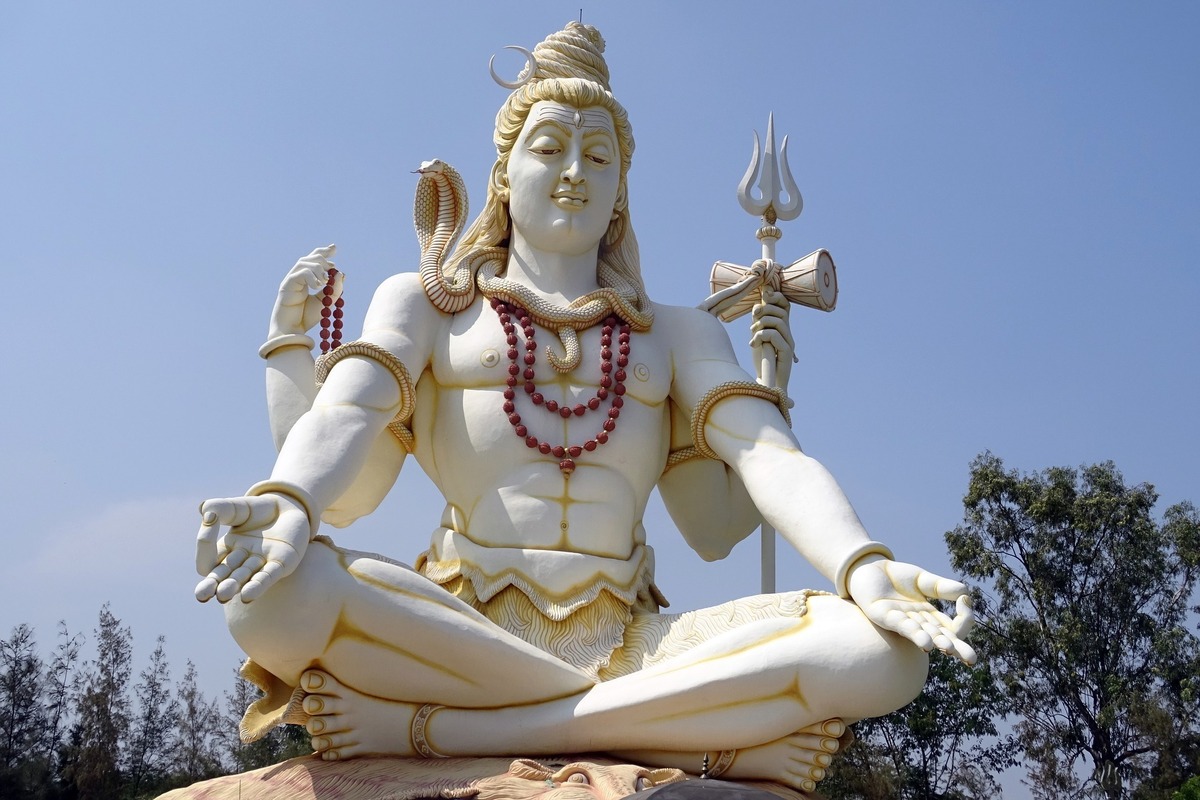
The god Shiva is presented within Trimurti as the destroyer, or transforming god. His most common representation depicts him with matted hair, a blue throat, a third eye on his forehead, and four arms, one of which holds a trident.
In the Hindu sacred texts, one can find contrasting versions about Shiva's personality. On one side, this god is defined by his benevolence, through the practice of Yoga and an ascetic way of life.
On the other hand, it is also common to find references to the god Shiva covered in ashes and killing demons, symbolizing the finitude of beings and nature.
The three Shaktis companions of the Hindu trimurti gods
The three Shaktis are the three supreme goddesses in Hinduism. They represent the feminine dimension of transcendence and have a strong relationship with the traditions and practices of Tantra. In many sacred texts, these deities are the companions of the gods of Hindu Trimurti.
Saraswati, the Goddess of wisdom and arts
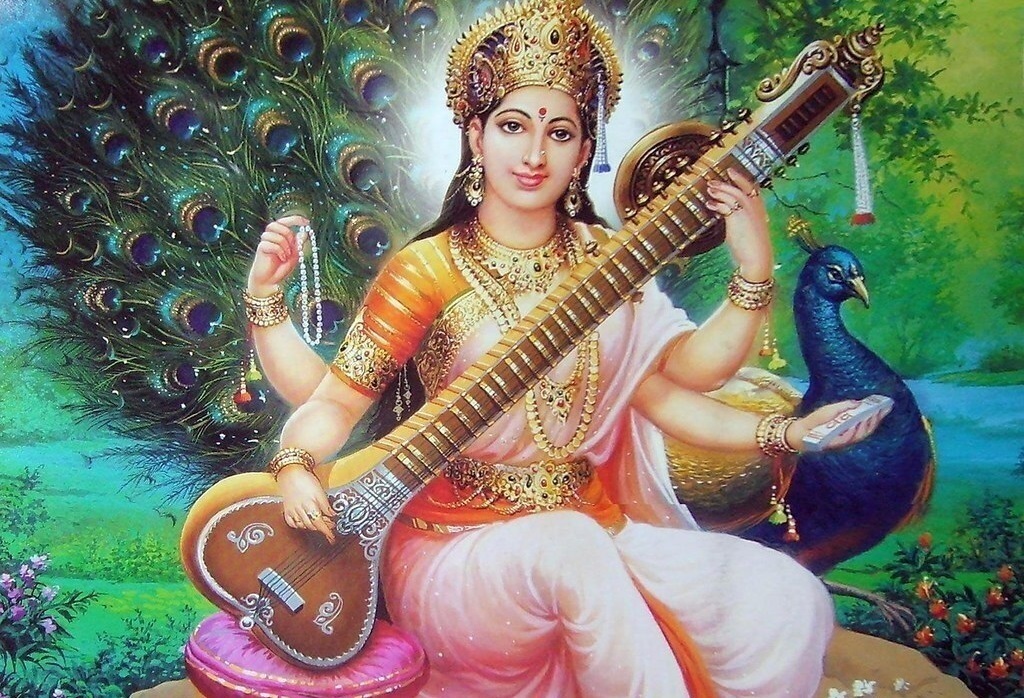
Saraswati is the wife of the god Brahma, considered the deity of knowledge, learning, music and the arts. She is depicted on a white lotus playing a veena, a stringed instrument resembling a lute.
In her origin, the goddess Saraswati was associated with a river deity, due to her property of purification. With time, she became one capable of purifying the spirit of men, which is why there are so many of her associations with knowledge and the arts.
Saraswati is one of the most worshipped deities in Hinduism, and there are many temples dedicated to his worship, in and outside India.
Lakshimi, the Goddess of wealth and prosperity
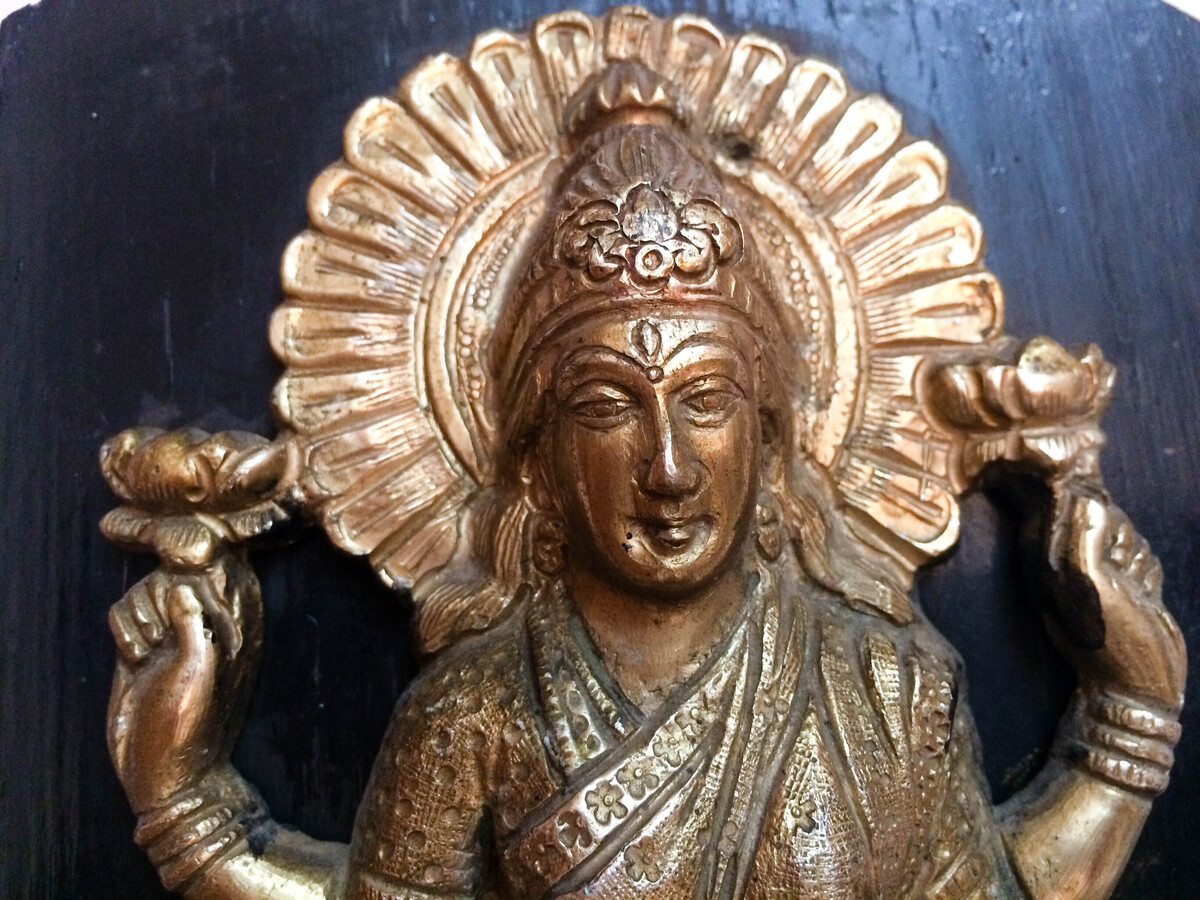
Lakshimi is the wife of the Hindu god Vishnu. Her depictions place her as a golden-skinned woman sitting on a lotus flower, surrounded by elephants and usually handing out or holding pots of gold coins.
Many virtues are attributed to Goddess Lakshimi, such as wealth (material and spiritual), love, prosperity, fortune and beauty.
Lakshimi always accompanies her husband, Vishnu, every time he returns to Earth in one of his incarnations. When this happens, she takes the form of other goddesses also important to Hinduism.
Parvati, Goddess of love and fertility
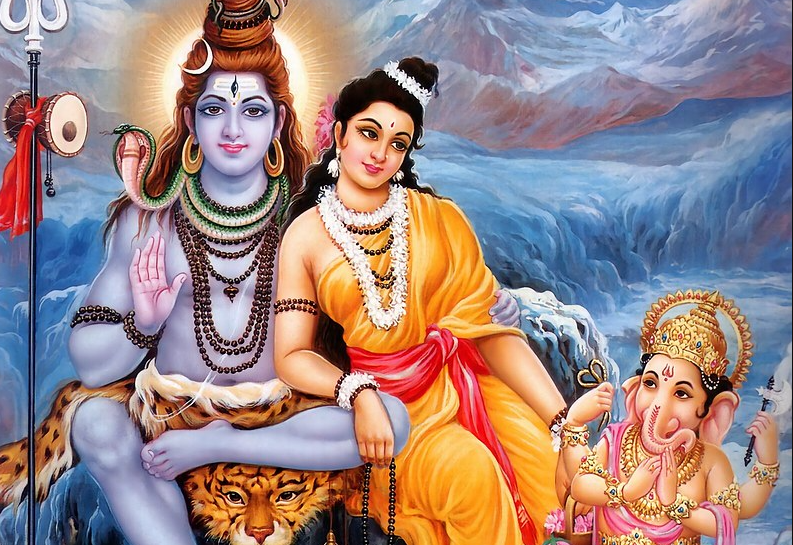
Considered as the mother goddess of Hinduism, Parvati is the goddess of love, fertility, marriage and harmony. This deity has many different representations. In the most common ones, she is depicted wearing a red dress while accompanied by her husband, Shiva.
Like her husband, Parvati can assume a benevolent or destructive aspect. She is responsible for both the nurturing and destructive energies of the universe.
In many traditions, her fierce and uncontrollable side is considered her true spiritual manifestation, a moment when Parvati is seized by a rage capable of destroying everything around her.
Other Hindu Gods
There are many other Hindu gods important to the religion. These are deities that can be both manifestations and transformations of others, as well as sons and daughters of major deities. Here is some information about them.
Ganesha, the Lord remover of obstacles
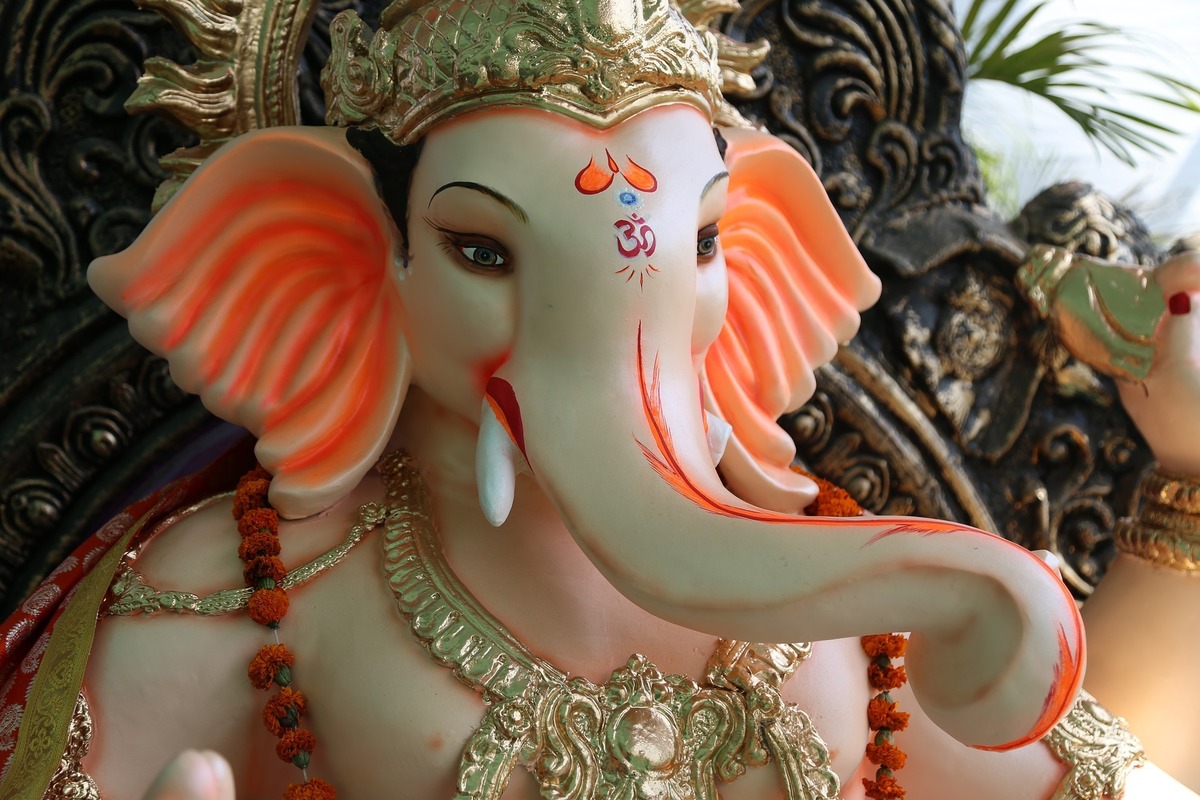
Among all the deities of the Hindu pantheon, there is no doubt that Ganesha is the most known and worshiped around the world. Son of god Shiva with goddess Parvati, this god is known for having four arms and an elephant head.
Worshiped as the Lord Remover of Obstacles, Ganesha is also recognized for being the god of intelligence. In many traditions of Hinduism, this god can both avoid and remove obstacles, as well as create them.
There are many explanations about his depiction with an elephant head. The most common one claims that his father, Shiva, beheaded him as a child and put an elephant head in its place.
Kali, the furious mother of time
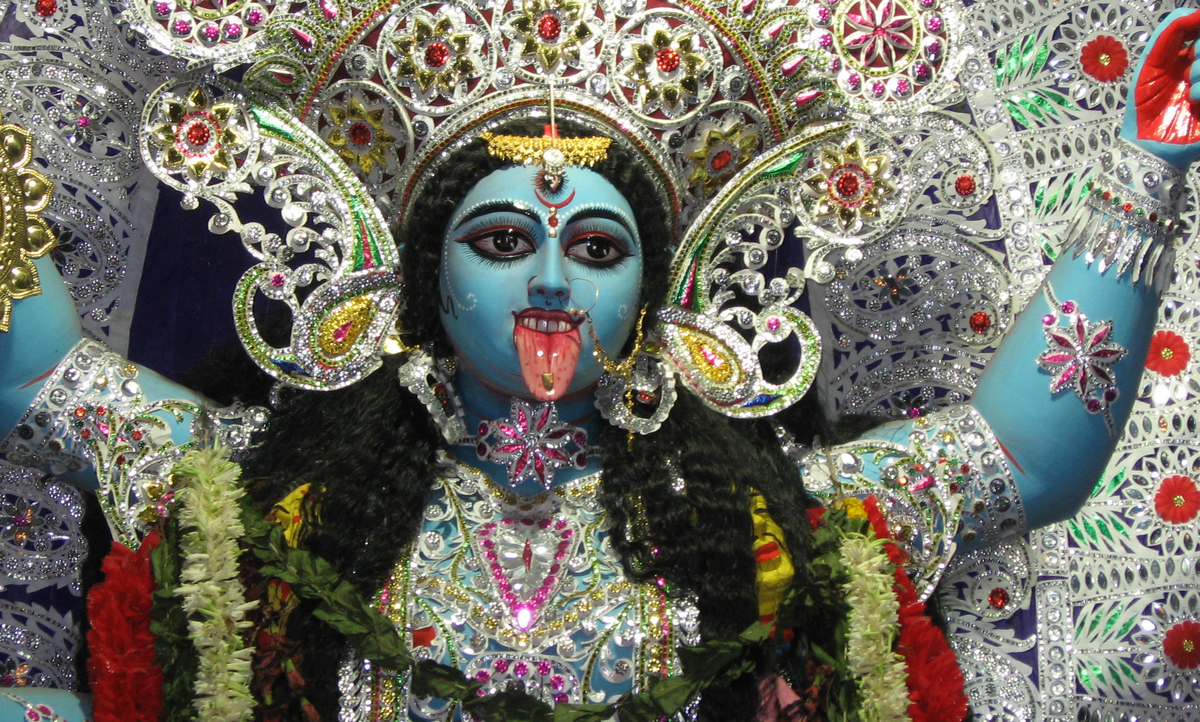
The goddess Kali is one of the most dangerous and violent deities in Hinduism. Represented as the goddess of death and time, in many traditions she is taken as one of the manifestations of the goddess Parvati. Kali can be described as having four to ten arms, dark skin, a huge tongue sticking out of her mouth and holding the head of a demon.
Although she is violent and terrifying, the goddess Kali is responsible for the destruction of evil. Being the female representation of time, she represents everything that has a beginning and an end - the one who brings life and death.
Durga, the Goddess of Protection
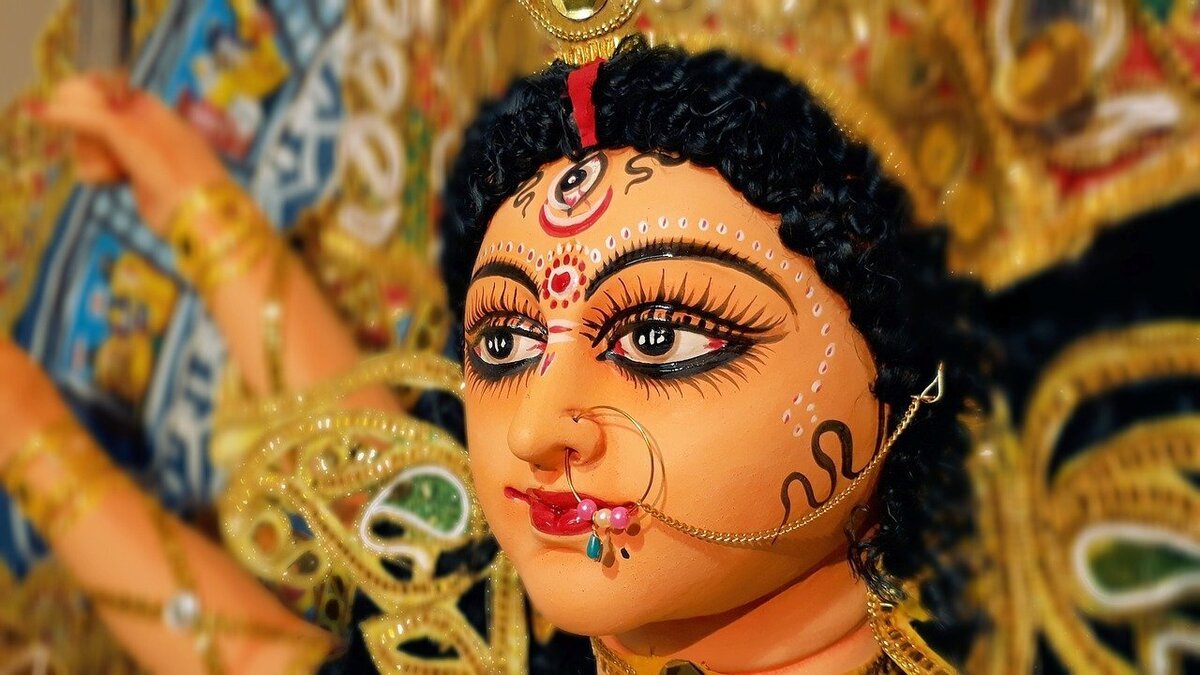
The goddess Durga is one of the manifestations of the mother goddess, Parvati. She represents a fiercer variation, responsible for war, strength and protection. Durga manifests herself to fight evil and demons that compromise peace in the world. She is a Hindu goddess who is represented with ten arms, holding numerous weapons, and usually mounted on a tiger.
Although she is a goddess associated with wars, Durga's violent behavior is not justified in her pleasure for battle and blood. The calm and serene face that appears in her images symbolizes the need to fight for the desire of a greater good and for the liberation of the oppressed.
Krishna, the God of devotion
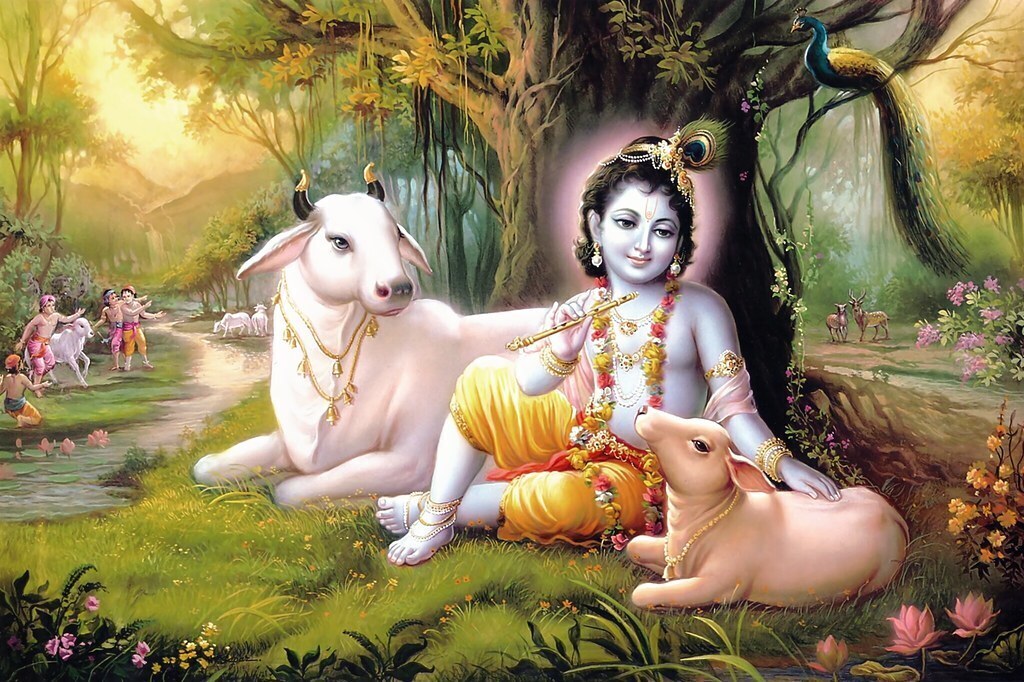
Krishna is the eighth incarnation (avatar) of Vishnu, one of the three primordial Hindu gods. He is usually depicted as a playful child playing a flute.
It is a deity present in numerous sacred traditions of Hinduism. In most of them, it is common to find descriptions of his life trajectory, from a baby to his adult life.
In his adult life, Krishna is a god who has eight wives. Each of them represents a different aspect of himself. Therefore he is taken as the god of devotion, because he was able to devote his love to all his wives, and they all devoted their love to him.
Rama, God of truth and virtue
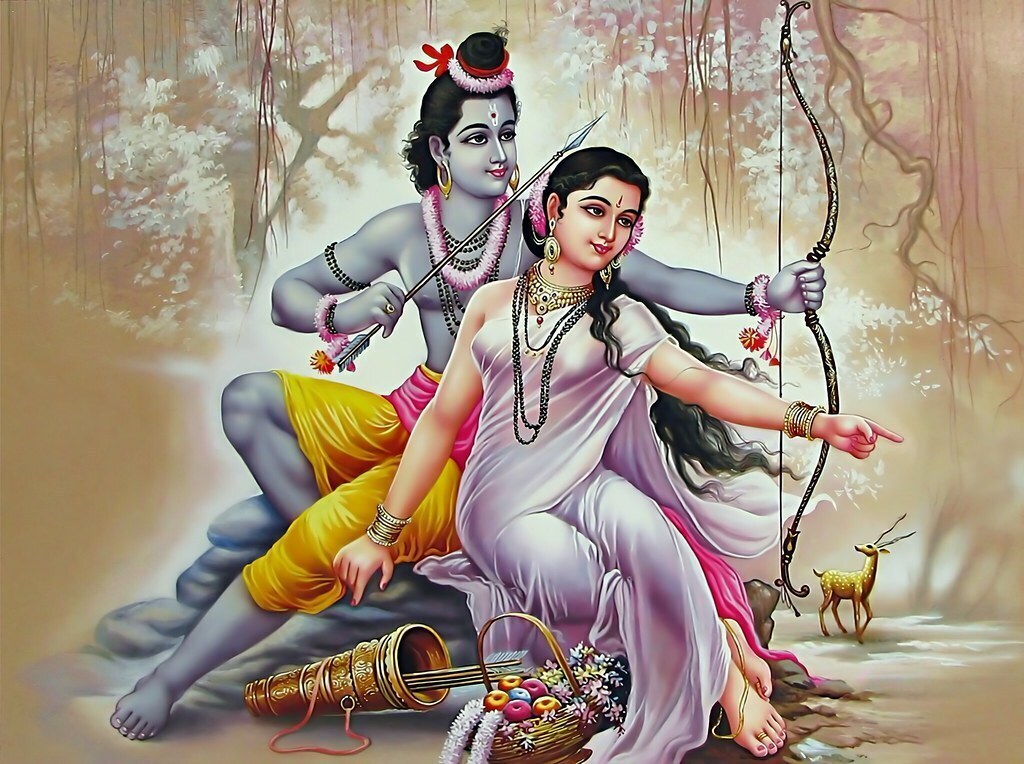
The god Rama is the seventh incarnation (avatar) of Vishnu, part of the supreme trinity of Hinduism. His images represent him as a dark-skinned god with long arms and possessing a bow and arrows. He is regarded as the god of truth and virtue.
Rama's stories are particularly complex and challenging. He is understood as both a human and a deity. His mortality did not prevent him from gaining all the moral qualities desirable among men.
According to him, to live fully, we should equally pursue three goals: virtue, desires and wealth.
Hanumam, symbol of strength and devotion
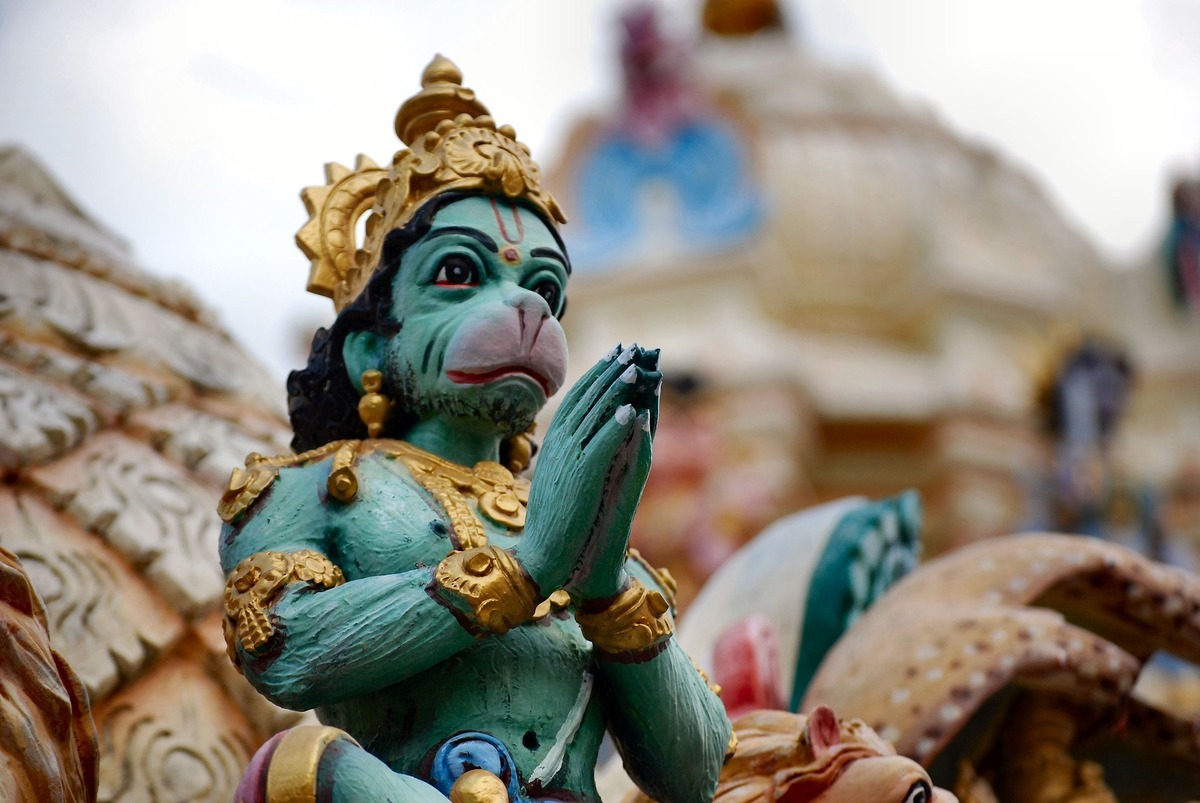
Hanumam is the son of the Hindu god of wind, Vayu, and a faithful devotee of the god Rama. His relationship with Rama has made him a symbol of strength, devotion, courage, and self-discipline. Depictions of Hanumam tearing open his own chest, revealing within it the images of Rama and his wife, Sita, are common.
Understood as the perfect combination of strength and devotion, Hanumam possessed numerous attributes valuable as a god, among them immortality, self-control, the ability to shape-shift, and healing abilities.
Hindu Vedic Gods
The Hindu Vedic gods are those that appear in the Vedas, liturgical texts that became fundamental to the structuring of Hinduism. Learn about the main Hindu gods that make up the Vedic pantheon below.
Agni, the Fire Deity
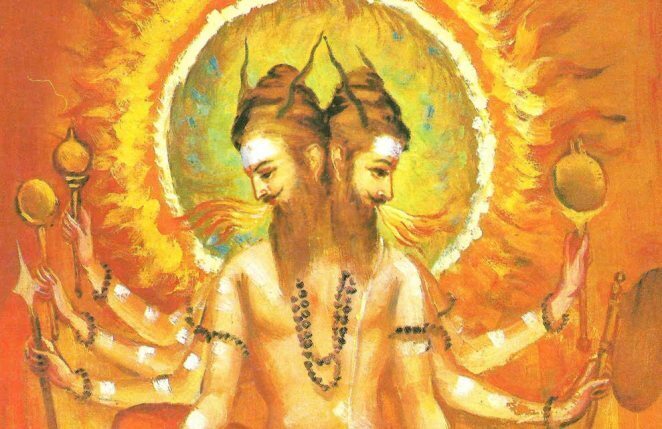
Agni is the Hindu god of Fire. With Space, Air, Water and Earth, he comprises the five fundamental elements that combine to give form to all existing reality. His appearance is that of a god with two or three heads, four arms, reddish or dark skin with flames rising from the top of his head.
In many traditions, the god Agni is understood as the final form of Hinduism's supreme trinity, as the one who rules the earth. The symbolism of fire, understood as the element that creates, transforms and destroys, is deeply associated with the energy that this god can transmit.
Indra, the deity of storms and thunder
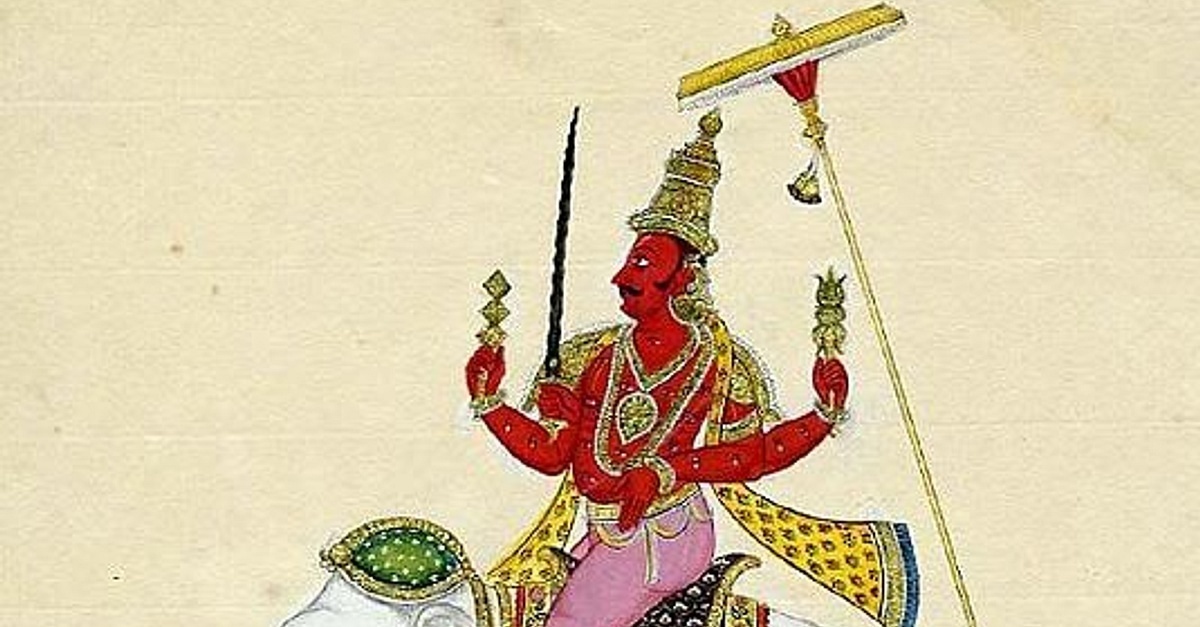
Famous in Hinduism for being the king of the sky, Indra is the deity of storms and thunder. He is the most celebrated god among the Vedic pantheon, responsible for killing the great demon, Vritra, bringing prosperity to human beings.
His image is depicted as a red-skinned god riding an elephant, with one arm wielding a lightning-shaped weapon.
His characteristics make this deity very similar to some gods of other mythologies, such as Thor and Zeus. In some versions of the sacred texts, Indra appears as the twin brother of the god Agni, and in other versions, both gods are the same person.
Surya, the solar deity
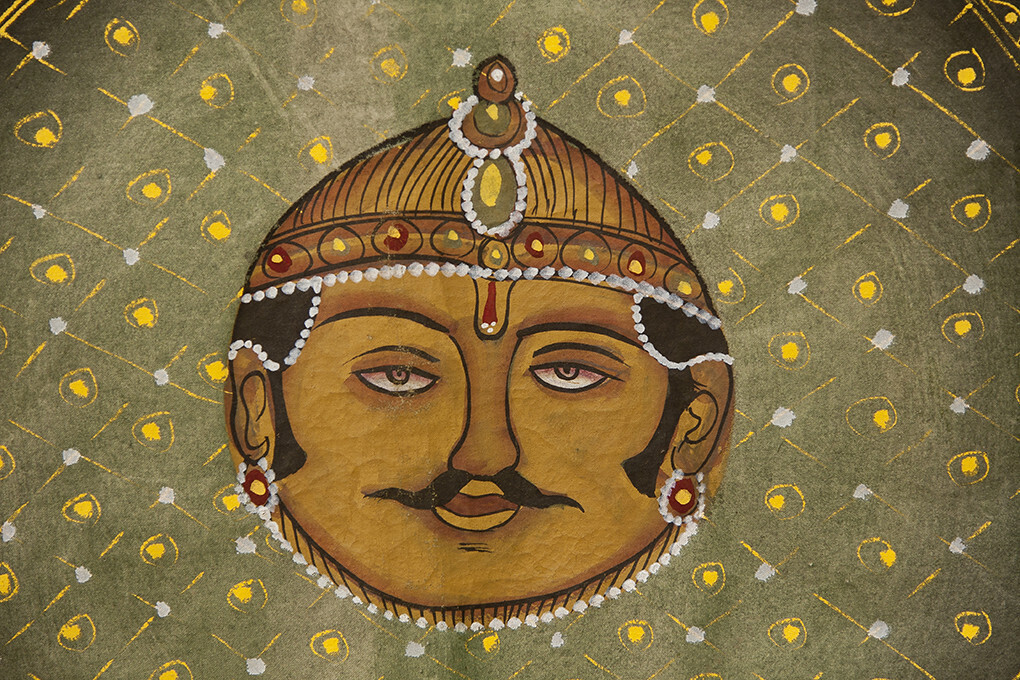
Surya is the solar deity in Hinduism. She appears being carried by a chariot with seven horses, symbolizing the seven visible spectra of light and also the seven days of the week.
She is a divinity associated to the day of Sunday and also to the sign of Leo of the Hindu zodiac. Nowadays, the figure of Surya is syncretized in other Hindu gods, like Shiva, Vishnu and Ganesha. For that reason, the places and temples that still worship this divinity are rare.
Varuna, the Deity of water and sky
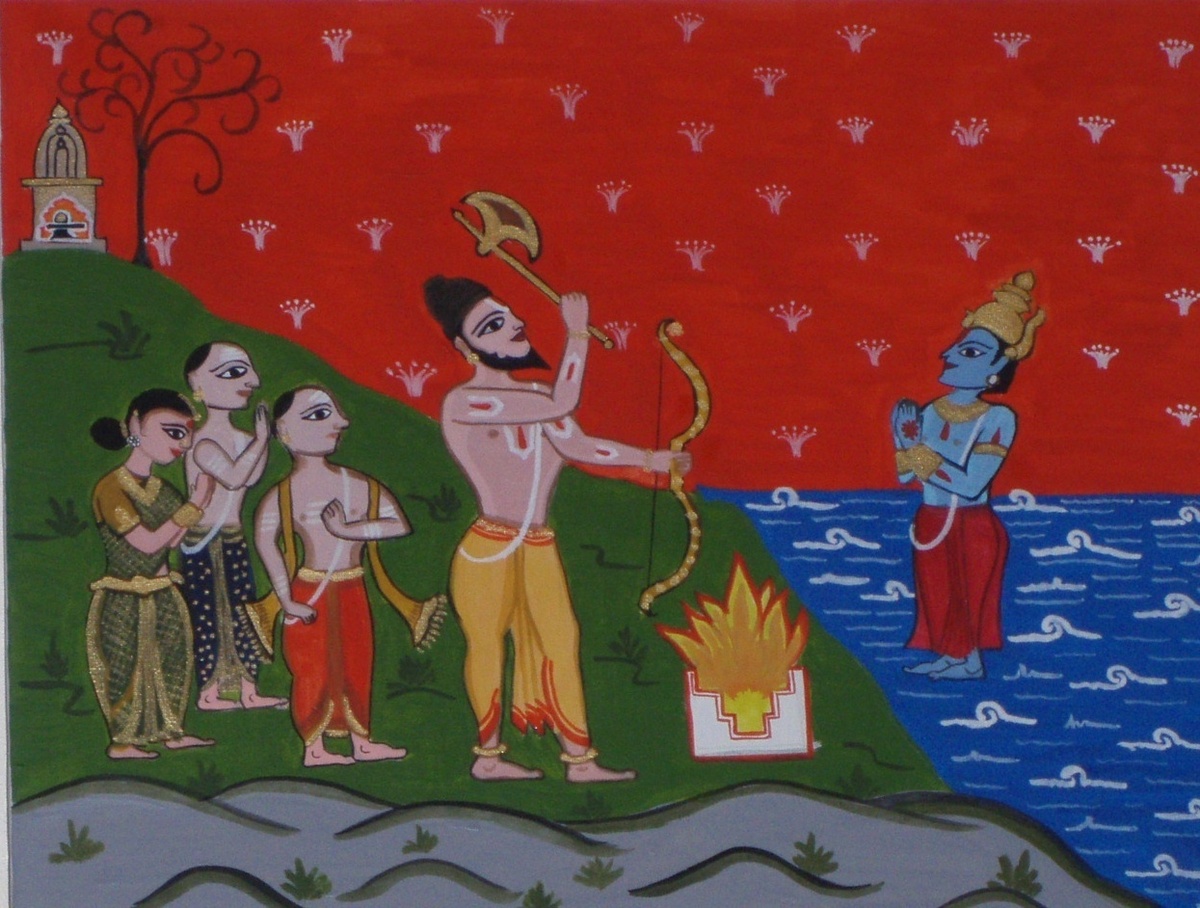
Varuna is a Vedic deity of Hinduism associated with the heavens, the seas, justice and truth. He is shown riding a crocodile and wielding a Pasha (rope lasso) as a weapon. He is the god who is grounded in water.
This deity is associated with the actions of covering, tying or enclosing, a reference to the oceans that surround and cover the whole world. Varuna is a just Hindu god, responsible for punishing those who practice injustice without remorse and for forgiving those who repent of their mistakes.
Varuna also has connections to medicine and knowledge, and is considered the protector of all physicians.
Yama, the Deity of death
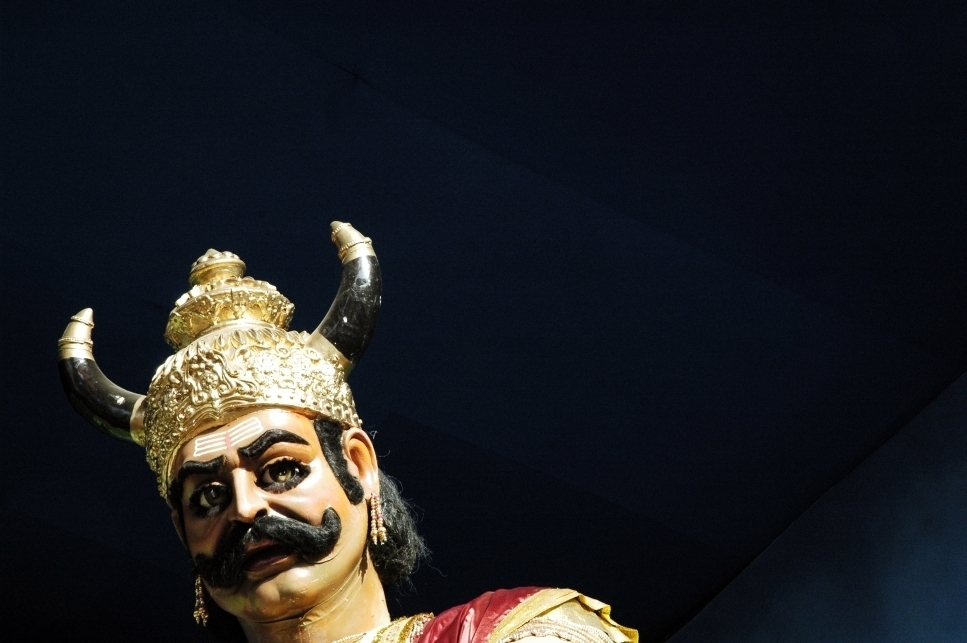
Yama is one of the oldest Hindu Vedic gods, the deity of death and justice. He is usually depicted as a dark-skinned god, riding on a buffalo and carrying an apple as a weapon to capture souls.
The god Yama is associated with law, moral rules, permissions and prohibitions. In some versions of the scriptures, Yama appears as the son of the god Surya, and in others as the son of the god Brahma. His function is to reap the souls of sinners and take them to Yamaloka, the Hindu equivalent of hell.
How are the Hindu gods present in our lives?
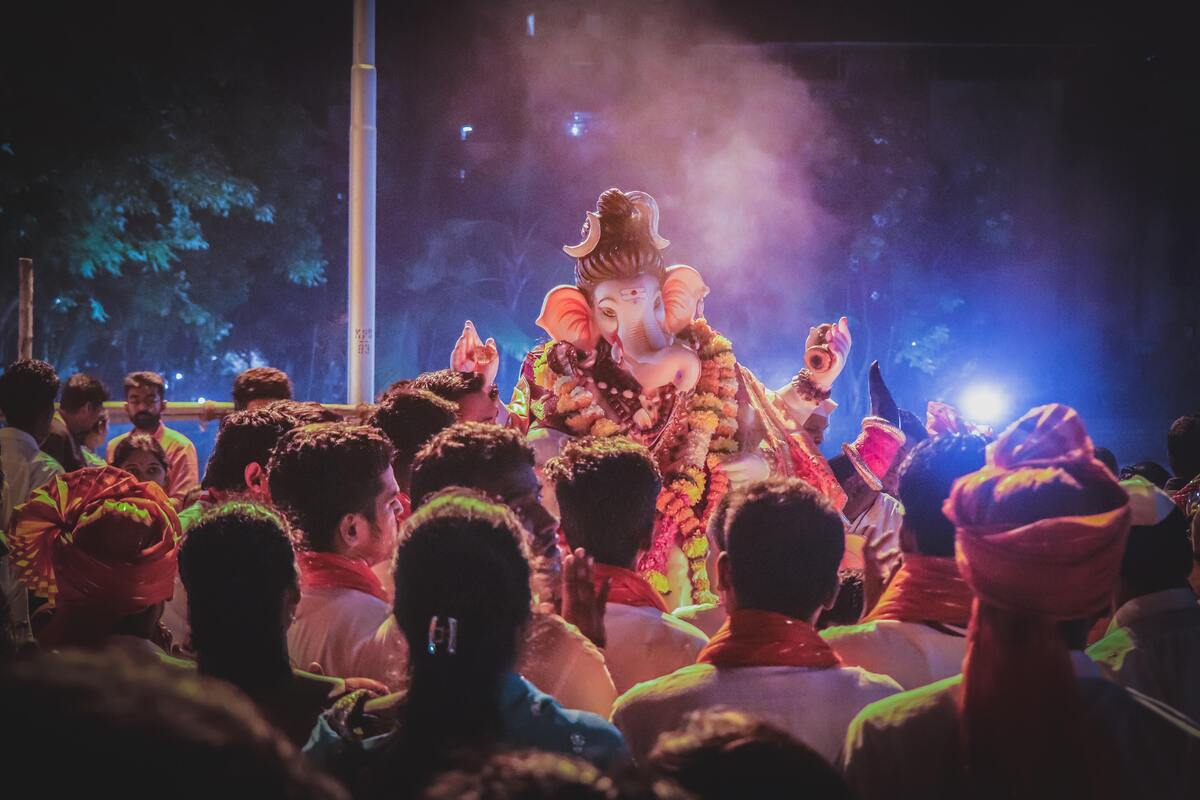
The presence of Hindu gods in people's lives can take on many dimensions. They can be present through your birth chart and zodiac, influencing your decisions and your destiny. In addition, Hindu gods can manifest positively in your life through traditional spiritual exercises such as Yoga.

